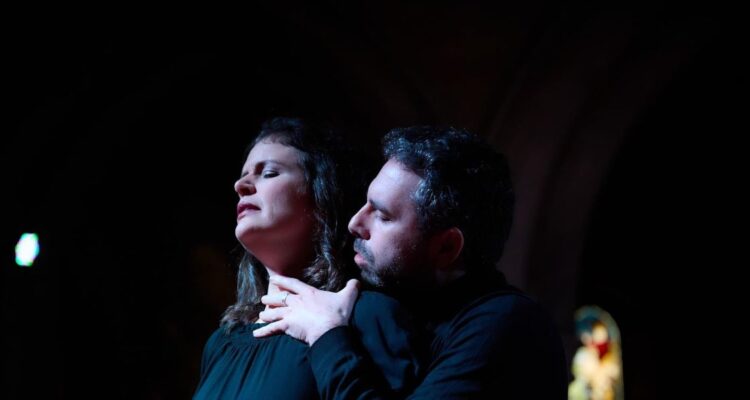Cards on the table. Figaro is my favourite opera and I must have seen 30 or more productions since I first saw it in 1964 at Covent Garden. I now have a number of “litmus paper” moments for judging each performance. They include how Figaro treats Cherubino at the end of the first act in the “non piu andrai” aria. Do I really believe the Count could be about to murder the page when the Countess’ closet is opened in Act 2? Does the absurd scene where Figaro discovers who his parents are move from the farcical to the sublime? Does the Countess forgive her penitent husband at the end? On all these tests,and others, Ensemble Orquesta’s chamber version scores ten out of ten.
The opera should in all decency be called ‘The Marriage of Figaro and Susanna’. The story is about the triumph of two clever servants who outwit their lecherous master, Count Almaviva, and celebrate their marriage while thwarting his dreams of seducing Susanna before she becomes Figaro’s wife. All the action takes place in the Almaviva mansion on the day of the wedding and other key characters are Rosina, the Count’s long-suffering wife, and Cherubino, a young page. A suite of servants and hangers-on help to ensure that the “bedroom farce” drama is full of twists and turns but it is Mozart’s genius that lifts this cheerful nonsense to the heights, giving the singers music of extraordinary beauty and emotional depth, even in moments of comic absurdity.
As ever, the limitations of the Cockpit’s small space and lack of scenery options are turned to advantage by the redoubtable Marcio da Silva and his team. By scaling back some of the expansive moments in the score, he focusses the audience’s attention on the relationships between master and servant and husband and wife – and, with this extraordinary group of singer/actors, this strategy pays handsome dividends. In particular, the performance of Kathleen Nic Dhiarmada as the Countess was quite superb. At first sight she seems frail but we soon see that this be-lies a steely core as she sings of her determination to win back the love of her husband. And her stunning soprano voice is more than adequate for Mozart’s wonderful music, most clearly in her marvellous rendition of Dove Sono. I can’t wait to hear her in a bigger auditorium. Marcio da Silva and Helen May were ideally matched as the “about to wed” servants – their fight and reconciliation in the final scene was truly touching. Oshri Segev turned that magical moment at the end into a plea for forgiveness that really convinced. Anna-Luise Wagner was a genuinely funny Cherubino – her testosterone-filled teenager was spot-on and the transition from ‘terrified’ to ‘passionate’ in Voi che sapete was beautifully done.
Da Silva in his role as director provided some new insights into the story – some well staged action during the overture and at the very end told us a lot about what happens before – and after – the opera. And he found a new, if rather cruel, slant on the revelation about who is Figaro’s mother. This is a story well told. And Mozart’s music does not suffer despite the score being reduced so that only seven instruments are needed – under the baton of Predrag Gosta this chamber ensemble sounded terrific.
Fans will know that Ensemble Orquesta specialises in baroque operas. With this marvellous Mozart classic now in their repertoire I do hope they will think about more post-1800 works. But when this Figaro comes to the Grimeborn Festival at the Arcola in the summer, it deserves full houses.
Music: Wolfgang Amadeus Mozart
Libretto: Lorenzo da Ponte
Conductor: Predrag Gosta
Director: Marcio da Silva
Performers: Helen May, Kathleen Nic Dhiarmada, Oshri Segev, Anna-
Luise Wagner.
Venue: Cockpit Theatre, London
Dates: 21 to 24 February 2024
Running time: 3 hours (incl. interval)

